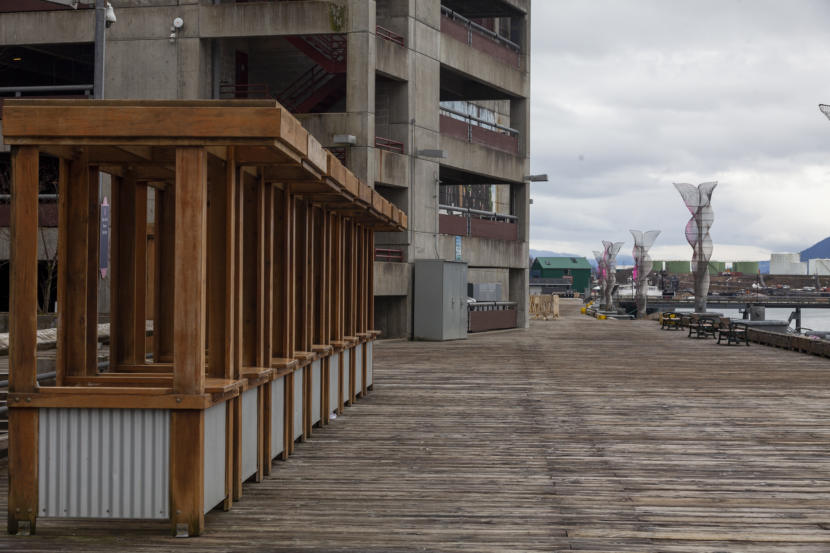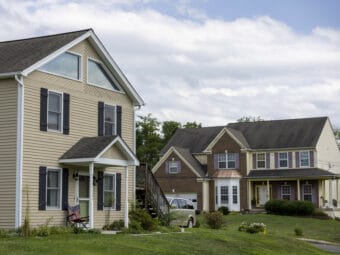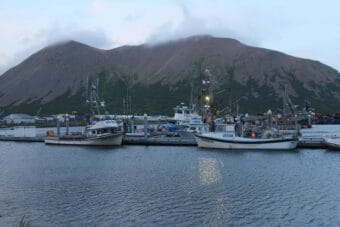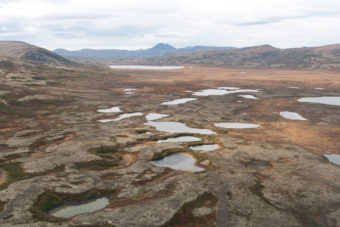
The pandemic created pockets of deep economic pain in Alaska, with low job numbers and high unemployment. But there are two positive indicators that stand out from 2020 in a surprising way.
When looked at in a vacuum, they seem to tell a different story. But economists say they’re largely driven by federal relief efforts and don’t reflect the whole economic picture.
Surprising indicator number one is personal income.
Despite huge losses in the state’s labor market, personal income in Alaska actually rose in 2020 by $1.4 billion.
“We’re in this situation where, in an aggregate sense, there is more money in the system than there was in 2019,” said Mouhcine Guettabi, an economist with the University of Alaska Anchorage’s Institute of Social and Economic Research. “Which is counterintuitive to every narrative that we see out there.”
He said as businesses closed and people lost jobs, a lot of money entered the state through federal relief efforts like economic impact payments, increased unemployment dollars and the Paycheck Protection Program.
“It’s a very different recession,” said Guettabi. “And largely because of the scale of the aid. And that’s really what we’re talking about here. The scale of the federal aid is what morphed these statistics.”
In March, state job numbers were down 6.9% from the same month last year. That’s nearly 21,900 jobs, and a continuation of 2020 trends.
Also in March, just over 29,000 Alaskans applied for rent and utility relief. But state economists say the distribution of financial losses was uneven. How well residents did financially during the pandemic depends on where they live and work and on their income. That’s important to keep in mind when considering the overall increase in personal income, Guettabi said.
“This doesn’t mean that every person is doing better,” he said. “It just means that there’s more money in the system. So some money went to people that kept jobs, some money went to people that weren’t affected by the recession and some money went to people that are struggling.”
The federal government did have eligibility requirements for relief money. But, Guettabi said, going forward, efforts should be targeted even more directly.
“This is just information about the scale and the size of federal aid,” he said. “But, the important caveat being, identify the places that are still lagging, that are still struggling, places or people or industries, and help those directly.”
Guettabi said it’s important to start thinking about recovery, and connecting out-of-work Alaskans with employers.
Surprising indicator number two is home foreclosures.
The federal pandemic response also included a moratorium on home foreclosures. That moratorium is ongoing. In 2020, there were only 395 foreclosures in the state.
“And that’s the lowest number that we’ve seen,” said Rob Kreiger, an economist with the Alaska Department of Labor.
According to Kreiger, there are typically between 600 and 1,300 foreclosures each year in Alaska. The state saw a spike of 6,821 foreclosures during a housing crash in the late 1980s.
He said the foreclosures that were recorded in 2020 likely came before the moratorium was put in place — they may have even been initiated prior to 2020.
It hasn’t been proven, but trends in the housing market may also be at play, said Kreiger. With the pandemic came a seller’s market: Houses have been selling fast and at high prices.
“People are probably in a position where they could actually sell before it would have to go into foreclosure, which is probably a better scenario for everybody,” he said.
He said it’s unclear where the numbers go from here.
“The extent to which the number would stay low or increase depends on the strength in the overall economy,” said Kreiger. “And whether the people who are facing foreclosure, how quickly they’re able to find jobs and get out of the situation I think would be the determining factor moving forward.”
And much of that will depend on the trajectory of the pandemic.



